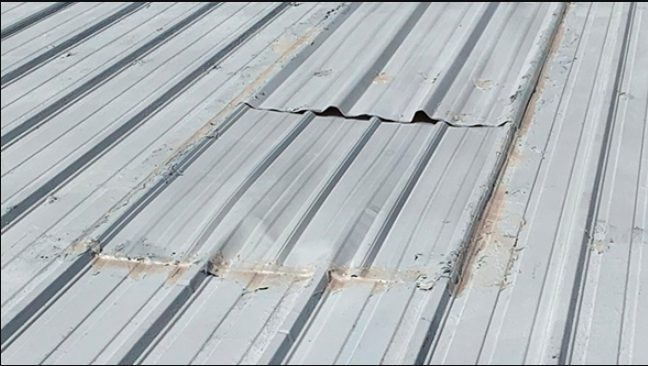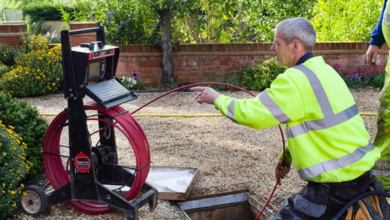How to Address Roof Installation Issues During Different Seasons?

Roof installation is a significant investment for any homeowner, and the effectiveness of this process can be highly influenced by the season in which it occurs. Different weather conditions present unique challenges that can affect the quality and longevity of a new roof. Understanding these seasonal challenges is crucial for ensuring the installation is carried out successfully. We will explore how to address roof installation issues during various seasons, providing practical insights and strategies to navigate each one effectively.
Spring Challenges and Solutions
Spring is often considered an ideal time for roof installation due to the moderate temperatures and relatively dry conditions. However, this season also presents its own set of challenges. One of the primary issues is the increased risk of rain, which can disrupt the installation process and lead to delays. Wet conditions can affect roofing materials’ adhesion, potentially causing long-term durability issues.
To address these challenges, it is essential to monitor weather forecasts closely and schedule installation on days with minimal rain. If rain is expected, ensure that the roofing crew is prepared with waterproof tarps to protect exposed areas of the roof. Also, choosing moisture-resistant roofing materials is beneficial, as they can help mitigate the effects of any unexpected rain during installation.
Summer Installation Considerations
Summer brings challenges for roof installation, primarily due to the high temperatures and intense sunlight. Extreme heat can cause roofing materials, such as asphalt shingles, to become excessively soft and pliable. This can make them more challenging to handle and affect their proper installation. Furthermore, the heat can increase the risk of heat-related illnesses for the roofing crew, potentially leading to safety concerns.
To manage these issues, schedule installation during the cooler parts of the day, such as early morning or late afternoon. Ensure the crew has adequate hydration and rest breaks to prevent heat exhaustion. Additionally, consider using heat-resistant roofing materials to withstand high temperatures without compromising performance.
Read also: How To Automate Your Home for Vacation and Travel
Autumn Roofing Concerns
Autumn is another favorable season for roof installation, with cooler temperatures and generally dry conditions. However, this season also presents its own set of issues. Falling leaves and debris can accumulate on the roof and gutters, potentially causing blockages and affecting installation. Additionally, the onset of cooler temperatures can lead to early frosts, which may impact the curing time of certain roofing materials.
To address these concerns, ensure the roofing area is cleared of leaves and debris before installing. It is also advisable to choose roofing materials suitable for varying temperatures and have a longer curing time to accommodate cooler weather. Planning the installation schedule to avoid late autumn, when temperatures drop significantly, can help prevent potential issues related to frost and freezing conditions.
Winter Installation Strategies
Winter is often the least favorable season for roof installation due to cold temperatures, snow, and ice. These conditions can pose significant challenges, including the risk of ice dams forming on the roof, which can cause water to back up and potentially lead to leaks. Additionally, snow and ice can make the roofing surface slippery and dangerous for the installation crew.
To address winter installation issues effectively, use roofing materials designed for cold weather. These materials are typically more flexible and can handle lower temperatures without becoming brittle. It is also essential to ensure the roofing crew is equipped with proper safety gear to handle slippery conditions. If snow or ice is present, removing it from the roof may be necessary before beginning the installation. Scheduling the installation during a break in severe winter weather can also help mitigate some of the challenges associated with this season.
Adapting to Seasonal Roof Maintenance
Seasonal roof maintenance from Rugged Roof & Home Improvement LLC of Bellbrook is crucial for prolonging the life of a newly installed roof and ensuring its performance throughout the year. Inspecting for any damage caused by winter conditions, such as ice dams or broken shingles, is essential in spring. Spring maintenance tasks should include clearing out gutters, checking for leaks, and addressing any issues caused by thawing ice. In summer, the focus should be on ensuring that the roof is adequately ventilated to prevent heat buildup, which can damage roofing materials and affect indoor comfort. Regular checks and prompt repairs during this season can prevent more serious issues from developing.
Preparing for Unexpected Weather Events
Unexpected weather events can pose significant challenges to roof installation and maintenance. Severe storms, sudden temperature changes, or unanticipated heavy rainfall can all impact the integrity of a newly installed roof. To prepare for such events, it is crucial to have contingency plans in place. This includes having a reliable contractor who can respond quickly to emergencies and ensuring that your roofing materials and installation methods are resilient to sudden weather changes. Investing in high-quality materials that can withstand extreme weather conditions will provide added protection and peace of mind. Regular inspections and timely maintenance can further help address any issues arising from unforeseen weather events, ensuring that your roof remains in optimal condition throughout the year.
Navigating roof installation across different seasons requires careful planning and consideration of each season’s unique challenges. Homeowners can ensure a smoother and more successful installation process by understanding and addressing the specific issues associated with spring rains, summer heat, autumn debris, and winter cold. Implementing strategies such as monitoring weather conditions, choosing appropriate materials, and ensuring the safety of the installation crew can help overcome these seasonal obstacles and achieve a durable and long-lasting roof.





